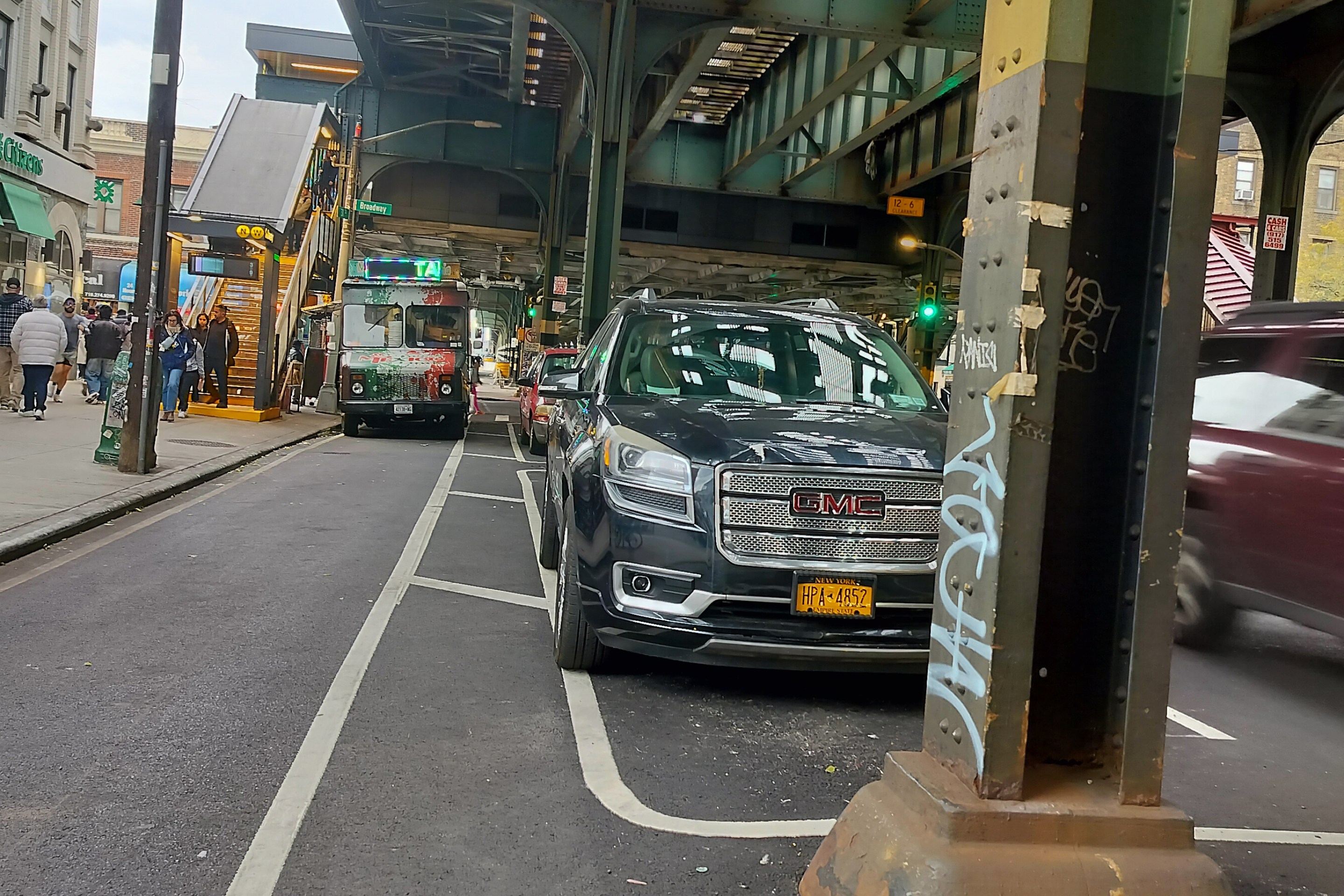Safety last.
Mayor Adams's decision to remove protections for cyclists along part of Bedford Avenue will "reduce overall safety along the corridor," according to new testimony submitted by the Department of Transportation — the agency tasked with carrying out Hizzoner's removal plan.
In a surprising exhibit uploaded late on Friday in the ongoing Bedford Avenue case, DOT revealed that it had long ago rejected a plan by powerful Hasidic leaders to move the protected bike lane from Bedford Avenue to Classon Avenue via a diversion along DeKalb Avenue because it will make cyclists and pedestrians less safe — and it will also require major changes on Classon, which is a key route for drivers getting off and on the Brooklyn Queens Expressway.
"Removing the protected bike lane won’t remove cyclists — it will only make the street less safe," the DOT said in Exhibit B. "The city risks legal liability for knowingly reducing safety on a Vision Zero priority corridor."
It's not only about safety, it's also about basic respect for cyclists.
Forcing northbound cyclists who want to be safe to turn left on DeKalb and then right on Classon "does a disservice to cyclists that want to continue north of DeKalb Ave.," the DOT said. "Cyclists will take the most direct route to their destination. Those heading northeast are unlikely to follow the diversion and will likely remain on Bedford Avenue."
The document is not a surprise in what it states — but in its timing. As DOT has long stated, the Bedford Avenue bike lane makes the roadway safer for all users.
"Preliminary analysis shows that injuries on Bedford Avenue between Dean Street and Flushing Avenue are down more than 12 percent compared to the same timeframe last year, and down by more than 38 percent for pedestrians," the agency said. "Between DeKalb and Flushing overall injures are down 47 percent."
But the document comes as the Adams administration, acting at the behest of Hasidic leaders, wants the bike lane protections removed between Willoughby and Flushing avenues. The mayor announced in a tweet on Friday, June 13, that he would make the protected bike lane into a painted bike lane along that stretch "to fit community needs."
Supporters of the bike lane sued, and won a temporary restraining order — one that is being fought by Adams ally and former Brooklyn Democratic Party leader and Assembly Member Frank Seddio (who has received campaign donations from the judge in the case).
Seddio's court paperwork claimed that the bike lane only appeared safer because crashes declined in the five months after the bike lane went in — when it was winter and there were fewer cyclists.
But his sworn affidavit is wrong: From January through May of 2024 — before the bike lane went in — there were 86 reported crashes, injuring 50 people.
From January through May of 2025— after the bike lane was in — there were 69 reported crashes, injuring 37 people, along the exact same stretch. That's a 19-percent drop in crashes and a 26-percent decline in reported injuries in the same calendar period.
In another affidavit in the case posted late on Friday, DOT Deputy Commissioner Eric Beaton defended his agency's work to improve the bike lane for all users after its initial installation in October 2024. He argued that the three blocks of Bedford Avenue are unique in the city because school bus drivers drop kids off one-by-one at their homes. Removing the protection for cyclists is the best way to address that unique circumstance, Beaton said.
There are "several issues with the current design” between Willoughby and Flushing avenues, he claimed, adding that those "issues" aren't the fault of DOT, which has tweaked the initial design several times to add bus loading zones and additional daylighting for pedestrians.
The school bus drop-off zones that DOT added after the protected bike lane's initial installation are "frequently partially or fully blocked by parked cars and were not always used by school bus operators," Beaton said.
"Additionally, school bus operators continued to pick up and drop off students at locations outside of these drop-off zones, making multiple stops along each block. This practice is uncommon elsewhere in the city, as school buses operators typically make only one stop per block," the filing said.
After initial publication of this story, an Adams administration spokesperson disputed the notion that DOT's court submission says the roadway stretch will be less safe without the protected bike lane.
"The documents ... reinforce the city’s position on modifying the bike lane design," said spokesperson Sophia Askari. "As we've stated multiple times, the bike lane is not being removed — but reconfigured to its original layout for most of this three-block stretch while ensuring that all necessary safety measures remain in place."
— with David Meyer






